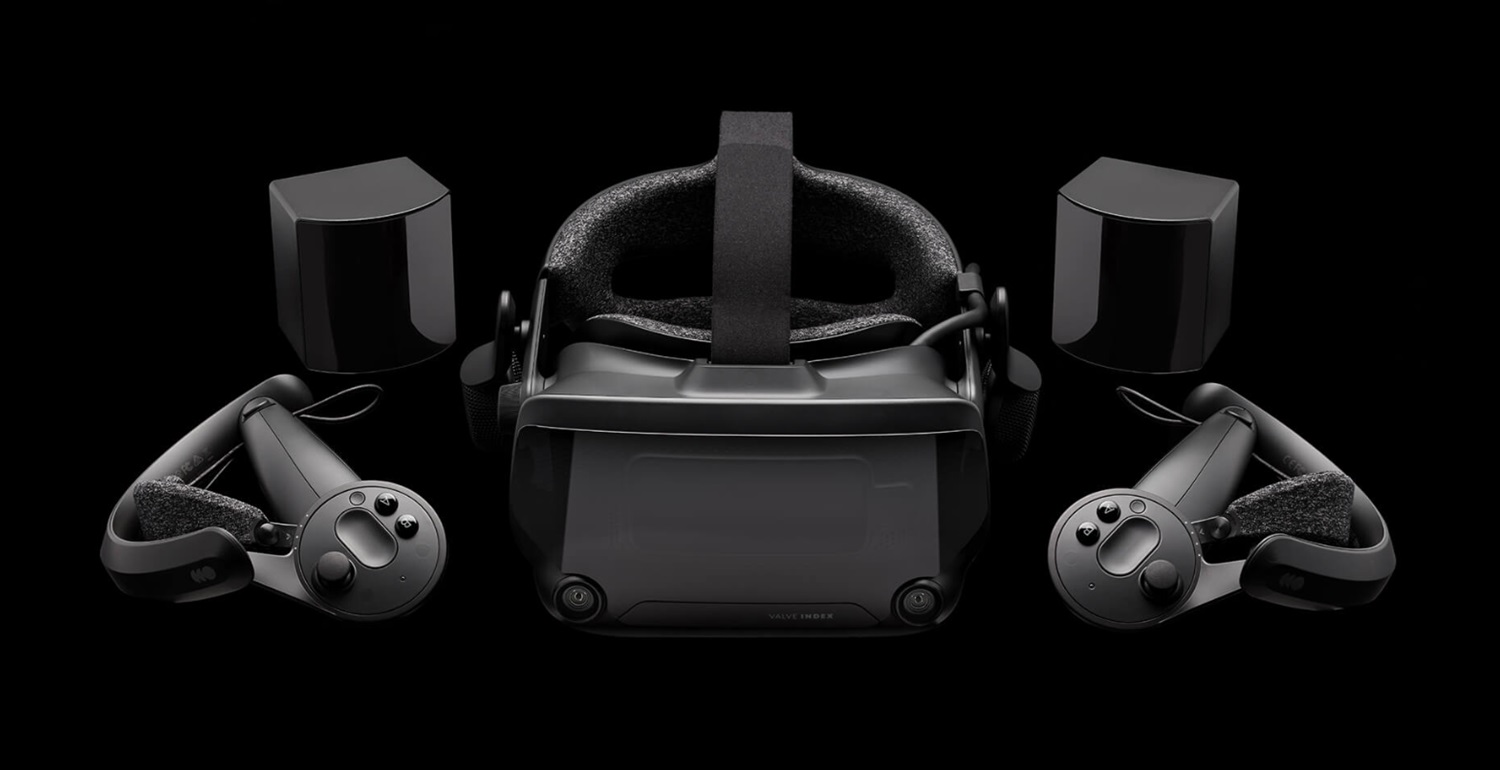Going for the Valve Index in 2024 when there are many higher-end VR headsets? Well, that’s probably what you thought. The Valve Index is one of the best PC VR headsets from 2020; its controllers are very intuitive, and its support for SteamVR is a big reason to still choose the headset.
But you know, setting up bulky devices and sensors to track your VR experience in 2024 seems a big deal for many, and no one is to blame as there are standalone VR headsets that offer a ton of features and clarity. Well, in this article, we will analyze certain reasons that could help you decide if the Valve Index is a worthy VR headset for 2024 VR applications.
Valve Index VR Headset
The Valve Index is a decent PC VR headset with support for SteamVR. It is a headset for streaming diverse content in super-clear visuals and with a wide FoV. This VR headset grants you access to lots of software apps and games, thanks to the SteamVR compatibility. But it’s a tethered VR headset, which means you need to set it up and place the base stations around the dedicated VR room.

Launched in 2019, the Valve Index lacks the cutting-edge technologies and features found on newer headsets from Meta, HTC, PlayStation, and Apple. But then, it is compatible with HTC Vive hardware, comes with fancy intuitive controllers, and delivers excellent audio quality.
When it was newly launched, it had the best display, but now? Definitely no. Even with the 120Hz refresh rate support, its competitors at the moment offer better display resolution. PC VR devices are not plug-and-play; you need to make a comprehensive setup with all devices included in the kit, and that’s one of the reasons most people shy away from the Valve Index in recent times.
Specifications
- Display: LCD, 1,440×1,600 pixels per eye
- Finger Tracking: Yes, individual finger tracking
- Eye Tracking: No
- Refresh Rate: 120Hz with full back-compatibility to 90Hz
- Motion Detector: 6DoF
- Software/OS: SteamVR
- Controllers: Valve Index® Controllers with adjustable strap and pivot
- Controller Battery Capacity: 1100mAh Polymer
- Controller Battery Life: 7+ hours
- Hardware: Base Station 2.0
- Optics: Double element, canted lens design
- Inter-pupillary Distance (IPD): 58mm-70mm range
- Audio: 37.5mm off-ear speaker with 40Hz-24KHz frequency response
- Mic: Integrated dual mic
Resolution
The Valve Index comes with a dual LCD that puts out 1440 x 1600 resolution each with up to 120Hz refresh rate (there’s an experimental 144Hz for compatible systems). Also, the Valve Index offers a wider field of view (FOV) up to 130°.
Audio
The audio delivery is just normal with the 37.5mm off-ear speakers codenamed Balanced Mode Radiators (BMR). Other audio specifications of this headset include a frequency range between 40Hz and 24KHz and an impedance of 6 Ohm.
Price
Valve Index still costs around $1k, which was the initial launch price. For the price tag, you could get the Meta Quest 3 standalone VR headset, which offers a ton of impressive features and technologies. Starting at $500 for the most basic model, the Meta Quest 3 comes integrated with everything you need, including up to 512GB of storage space; the headset was the first to feature the cutting-edge Snapdragon XR2 Gen 2 chip.
Controllers
The headset is PC-tethered and based on the SteamVR platform, just like the HTC Vive, which is why the Valve Index is compatible with Vive’s hardware. However, one thing that has always kept this headset on top is its high refresh rate and outstanding controllers. You must admit that the Valve Index controllers are among the very best in the market; they can track every one of your fingers.
VR Kit
Unlike standalone headsets that are much more flexible, the Valve Index headset has a kit; the complete kit comprises the Valve Index headset, two dedicated controllers, and dual base stations—all of these go for $999.
Games
Well, there are a lot of games to catch up with when you connect to the Steam Library. There are actually no Valve Index exclusive titles, but then you get to enjoy titles like Afterlife, Altair Breaker, Arizona Sunshine II, Budget Cuts 2: Mission Insolvency, Become a VirtualCop, and many other titles—via Steam Library.
PC Compatibility
To power and run the Valve Index, you need a PC with the following minimum specifications:
- Graphics Card: NVIDIA GeForce GTX 970 or later, AMD RX480 or later
- Video Output Port: Display Port 1.2
- Processor: At least dual dual-core processor with hyper-threading
- RAM: Minimum 8GB
- Output Port: USB 3.0
- Operating System: Linux, Windows 10, and SteamOS
Is Buying the Valve Index Worth It in 2024?
While everyone is liable for their opinion, and making a final decision on which VR headset to buy is a personal decision, there are general factors that could imply that buying a particular VR headset—owing to the specs—in times like this may not be the best choice. For the $1k price, the Valve Index is quite an expensive buy in 2024, honestly.
Comparing the Valve Index and newer VR headsets of today, there are many lapses on the Index’s side. Direct alternative headsets like the HTC Vive Pro 2 and Sony PSVR 2 offer more features, better resolution, and access to more content.
Basically, PC VR headsets are no longer a top choice for many VR enthusiasts; the standalone headsets seem to meet every need, including the easy setup. PC VR headsets are more expensive than standalone options, and they need a bulky setup (including a high-spec computer to power the device).
Conclusion
Looking at the features, specs, and capabilities of the Valve Index headset, you can easily tell if it’s worth it for you—amongst all possible alternatives you can get for the price. If you already own the Valve Index, it’s a great VR headset, but buying it for the first time in 2024? That’s not a practical choice—well, unless there’s a special reason why you want the headset.
